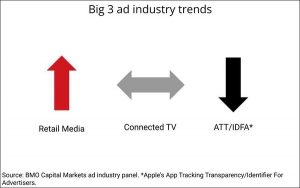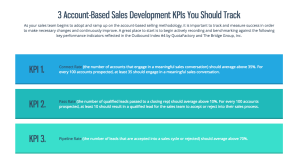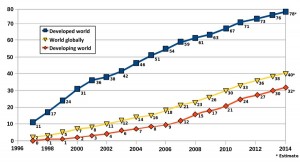3 areas of business where you can improve profitability with inventory management
Don’t you love when you put on a jacket for the first time since last season and find a $ 20 bill in the pocket? It was there all the time, it just needed to be found. On a grander scale, there are funds to be uncovered within your supply chain. However, if you are not being strategic in every arm of your business, then it’s likely costing you big time.
It doesn’t have to be complicated, either. Profitability can be improved in three basic functions of everyday operations.
- Customer Service
Your customers are the whole reason you have a successful business in the first place. You should know what they actually want, rather than give them what you think they want. When you provide your clients with what they need, you’ll avoid paying for the “extras” that they don’t care about.
Rob O’Byrne, contributor for Supply Chain Quarterly, observed another bad example of customer service that cost an auto product distributor truckloads of cash, so to speak. The company only delivered to certain regions on certain days of the week. Emergency deliveries were only done on Fridays.
“[The company] that followed this practice had no customer service policy or discipline, and it sacrificed customer satisfaction for its own ease of transport planning,” O’Byrne added.
When you know your customer base inside and out, you will know what they prefer as well as how to solve underlying problems to eliminate complaints. You and your employees will have the capability to respond to problems more quickly and accurately.
“It’s important to remember that when customers see value in a particular level of service, they will expect to pay for it. They will be happy to pay for it when it helps them to run their own businesses better,” O’Byrne added.
Improving customer service can also be as simple as updating your inventory management processes. You don’t want customer service staff fumbling around through printed or hand-written documents while on a call with potential customers. They are on the front lines, and a first impression is of utmost importance to growing and maintaining clientele.
To keep customers satisfied with your company, make sure your whole organization understands why you do what you do. When you align customer service to customer requirements, they will come back, turning into more sales and profits.
- Warehouse/Inventory
Demand segmentation and inventory right-sizing both variable and unpredictable.
If you can get a good grasp on these metrics patterns, it will significantly help you know your supply chain on both the supply and demand sides. Using the right inventory optimization tools for your supply will help prevent holding too much inventory or stock-outs and lost sales, reducing write-downs or write-offs.
Racesource Inc., a custom manufacturer of vehicle components for the racing industry, was growing rapidly, and the volume of its inventory quickly became too much to manage with an Excel spreadsheet.
“Maintaining an accurate inventory count on Excel was time consuming and error ridden,” Racesource VP Paul Huffaker said. “Often I would reorder or manufacture parts I already had simply because I didn’t know I had them, which was an unnecessary cost. And with many smaller items being combined into an assembly, I needed a system that could use the existing UPC codes to track the individual item as well as the assembly.”
After doing some research into inventory management, Huffaker chose Wasp Barcode Technologies’ Inventory Control. Inventory Control because it provided a barcoded tracking system that could effectively manage assemblies and work with existing UPC codes.
Since implementing inventory management in 2012, Racesource has greatly improved organization, billing, manufacturing, and reordering processes. In the past, employees spent at least an hour a week simply tracking parts. Now the company has saved approximately $ 8,000 annually, money that used to be spent reordering unnecessary parts.
- Decision Makers
“It doesn’t matter how good your Excel model is, you simply cannot model the complexity of the supply chain in Excel,” John Westerveld wrote in a recent article for 21st Century Supply Chain. “This means that the best you can do is build an approximation of your supply chain in Excel. As we know, in supply chain, details do matter and the small detail that is approximated in your model might be the detail that costs you.”
Excel also doesn’t provide real-time supply chain information, so you have no idea if data has changed between the time it was entered and when you check your spreadsheet. Westerveld explained that any time you make a change to an excel model, you have to wait six hours to see the impact. Not real efficient, especially when time is money.
When you can define your own unique set of supply chain KPIs, you find the following to prove true:
- Employees think the KPIs are meaningful and relevant to their jobs and to the business as a whole.
- All departments recognize KPIs at the heart of their functions across operations.
- KPIs drive performance improvement.
- Supply chain performance is improving
When you have the proper analytics, you can make more educated business decisions. Visibility across your supply chain will help you to see where inventory exists, to what capacity it is available, and what issues exist. Then you can improve supply chain performance with inventory management and get a better return on your investment and for less cost to your bottom line.
Business & Finance Articles on Business 2 Community(75)
Report Post








